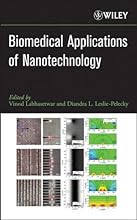Physics Professor, Nanomedicine Researcher, Author of "The Physics of NASCAR"
Diandra Leslie-Pelecky Biography
Diandra Leslie-Pelecky earned undergraduate degrees in physics and philosophy from the University of North Texas and a Ph.D. in condensed matter physics from Michigan State University. She was a professor in the Department of Physics at the University of Nebraska–Lincoln for 14 years and currently serves as a professor of physics at West Virginia University.
Leslie-Pelecky has been a prominent researcher in nanomedicine, focusing on magnetic nanoparticles used in medical diagnosis and treatment, including drug delivery systems, magnetic resonance imaging, and chemotherapy. Her research now largely concentrates on magnetic nanomaterials and their applications in targeted cancer therapies, diagnosing diseases at the cellular level, and using MRIs to monitor brain chemistry. She has developed educational materials on NASCAR science for middle and high schools, continuing her commitment to improving science education at all levels.
She is the author of "The Physics of NASCAR," a book that was excerpted by TIME magazine and featured in Sporting News magazine. Leslie-Pelecky blogs about the science of auto racing at Building Speed and appears periodically on the SiriusXM Speedway satellite radio program (NASCAR Channel 90) to discuss tech-related events in racing. She has also contributed to motorsports programming on various channels and the National Science Foundation’s Science of Speed web series. Recognized for her ability to communicate complex scientific concepts, Leslie-Pelecky has been a Sigma Xi Distinguished Speaker and regularly presents to both technical and non-technical audiences.
Contact a speaker booking agent to check availability on Diandra Leslie-Pelecky and other top speakers and celebrities.
Diandra Leslie-Pelecky Speaking Topics
-
Nanomedicine: The Doctor's New (and Very, Very Small) Black Bag
Not too far in the future, a diagnosis of cancer won't be a big deal: it will cost you another twenty minutes in the doctor's office while the doctor injects some nanoparticles that target and kill the cancer cells. Nanomedicine is an emerging research field that utilizes the unique properties of materials a hundredth the diameter of a human hair for medical diagnosis and treatment. We'll eventually be able to diagnose cancer at the level of a single cancer cell and use MRIs to investigate how the chemicals in your brain are doing their jobs. Sunscreen will automatically change its properties according to your sun exposure, and we'll be able to target drugs precisely to the part of the body that needs them, without affecting the areas that don't. Tiny sensors within the body will give you ample warning of a heart attack or stroke. This talk covers some of the most amazing developments in nanomedicine research that will start entering the clinic in the near term, as well as a few that already have.
-
Nano: Small Miracle or Big Trouble?
The magic of nanomaterials is the surprising discovery that when you make a material very, very small, it doesn’t always act like itself. In 1986, Eric Drexler sounded ominous warning about the dangers of nanotechnology run amok. He proposed a hypothetical construct called ‘grey goo’: a population of self-replicating nanobots that would grow like a cancer and consume everything. While Drexler’s apocalyptic vision was certainly attention getting, ‘grey goo’ has been replaced by a far more realistic and imminent concern. The unexpected properties of nanomaterials mean we can make materials we’ve never been able to make before—but it also means that we can’t always predict how those materials will interact with people, animals, and the environment. The specter of ‘grey goo’ is hyperbole. Concern over whether titanium dioxide nanoparticles in sunscreen can pass through your skin or how antimicrobial nano-silver might be released into waterways are real challenges we face right now. This talk gives a brief history of nanotechnology (which surprisingly started in the 4th Century CE) and highlights ways in which nanotechnology is already affecting your life and how it will continue to in the future.


-
How do I book Diandra Leslie-Pelecky to speak at my event?
Our experienced booking agents have successfully helped clients around the world secure speakers like Diandra Leslie-Pelecky for speaking engagements, personal appearances, product endorsements, or corporate entertainment since 2002. Click the Check Availability button above and complete the form on this page to check availability for Diandra Leslie-Pelecky, or call our office at 1.800.698.2536 to discuss your upcoming event. One of our experienced agents will be happy to help you get speaking fee information and check availability for Diandra Leslie-Pelecky or any other speaker of your choice. -
What are the speaker fees for Diandra Leslie-Pelecky
Speaking fees for Diandra Leslie-Pelecky, or any other speakers and celebrities, are determined based on a number of factors and may change without notice. The estimated fees to book Diandra Leslie-Pelecky are under $10,000 for live events and under $10,000 for virtual events. For the most current speaking fee to hire Diandra Leslie-Pelecky, click the Check Availability button above and complete the form on this page, or call our office at 1.800.698.2536 to speak directly with an experienced booking agent. -
What topics does Diandra Leslie-Pelecky speak about?
-
Where does Diandra Leslie-Pelecky travel from?
Diandra Leslie-Pelecky generally travels from Bowie, MD, USA, but can be booked for private corporate events, personal appearances, keynote speeches, or other performances. For more details, please contact an AAE Booking agent. -
Who is Diandra Leslie-Pelecky’s agent?
AAE Speakers Bureau has successfully booked keynote speakers like Diandra Leslie-Pelecky for clients worldwide since 2002. As a full-service speaker booking agency, we have access to virtually any speaker or celebrity in the world. Our agents are happy and able to submit an offer to the speaker or celebrity of your choice, letting you benefit from our reputation and long-standing relationships in the industry. Please click the Check Availability button above and complete the form on this page including the details of your event, or call our office at 1.800.698.2536, and one of our agents will assist you to book Diandra Leslie-Pelecky for your next private or corporate function. -
What is a full-service speaker booking agency?
AAE Speakers Bureau is a full-service speaker booking agency, meaning we can completely manage the speaker’s or celebrity’s engagement with your organization from the time of booking your speaker through the event’s completion. We provide all of the services you need to host Diandra Leslie-Pelecky or any other speaker of your choice, including offer negotiation, contractual assistance, accounting and billing, and event speaker travel and logistics services. When you book a speaker with us, we manage the process of hosting a speaker for you as an extension of your team. Our goal is to give our clients peace of mind and a best-in-class service experience when booking a speaker with us. -
Why is AAE Speakers Bureau different from other booking agencies?
If you’re looking for the best, unbiased speaker recommendations, paired with a top-notch customer service experience, you’re in the right place. At AAE Speakers Bureau, we exclusively represent the interests of our clients - professional organizations, companies, universities, and associations. We intentionally do not represent the speakers we feature or book. That is so we can present our clients with the broadest and best performing set of speaker options in the market today, and we can make these recommendations without any obligation to promote a specific speaker over another. This is why when our agents suggest a speaker for your event, you can be assured that they are of the highest quality with a history of proven success with our other clients.
Diandra Leslie-Pelecky is a keynote speaker and industry expert who speaks on a wide range of topics such as Nanomedicine: The Doctor's New (and Very, Very Small) Black Bag, Nano: Small Miracle or Big Trouble?, The Physics of NASCAR, From Nanomaterials to NASCAR: Materials at 200 Miles per Hour, Leaving the Academy and Underrepresented Women in Science and the Arts. The estimated speaking fee range to book Diandra Leslie-Pelecky for your event is available upon request. Diandra Leslie-Pelecky generally travels from Bowie, MD, USA and can be booked for (private) corporate events, personal appearances, keynote speeches, or other performances. Similar motivational celebrity speakers are Katherine Legge, Nabiha Saklayen, Dr. Kate Biberdorf, Kelley Earnhardt Miller and Julia Landauer. Contact All American Speakers for ratings, reviews, videos and information on scheduling Diandra Leslie-Pelecky for an upcoming live or virtual event.
This website is a resource for event professionals and strives to provide the most comprehensive catalog of thought leaders and industry experts to consider for speaking engagements. A listing or profile on this website does not imply an agency affiliation or endorsement by the talent.
All American Entertainment (AAE) exclusively represents the interests of talent buyers, and does not claim to be the agency or management for any speaker or artist on this site. AAE is a talent booking agency for paid events only. We do not handle requests for donation of time or media requests for interviews, and cannot provide celebrity contact information.
If you are the talent and wish to request a profile update or removal from our online directory, please submit a profile request form.





























